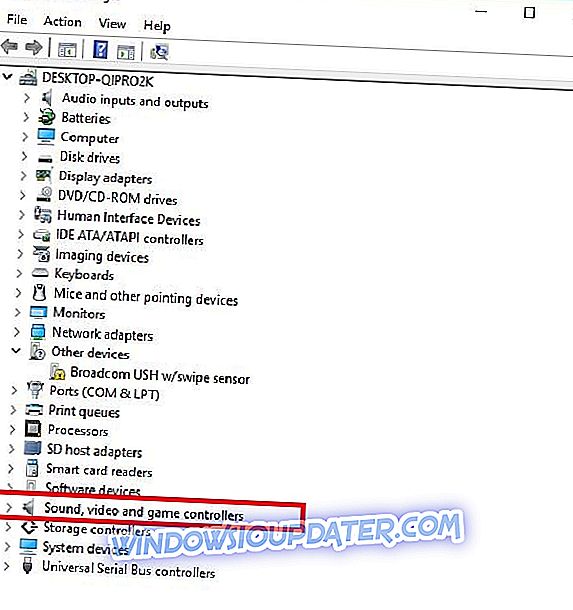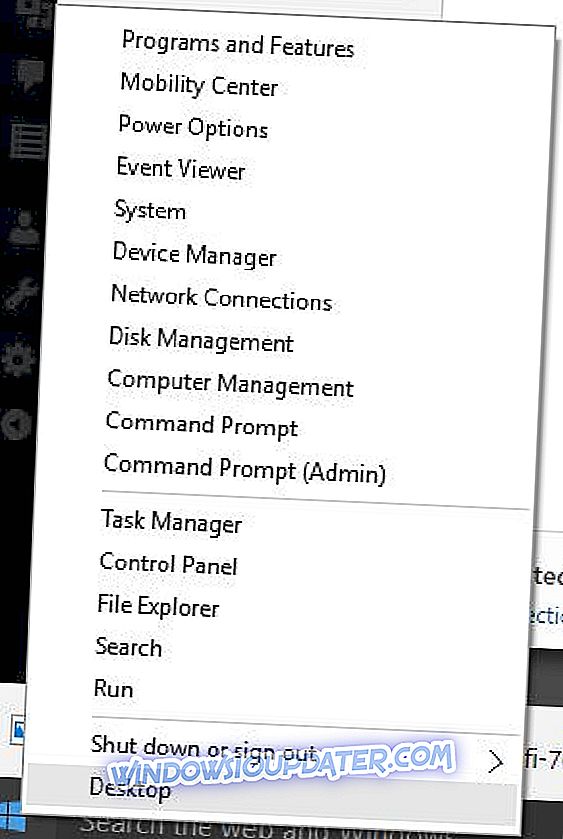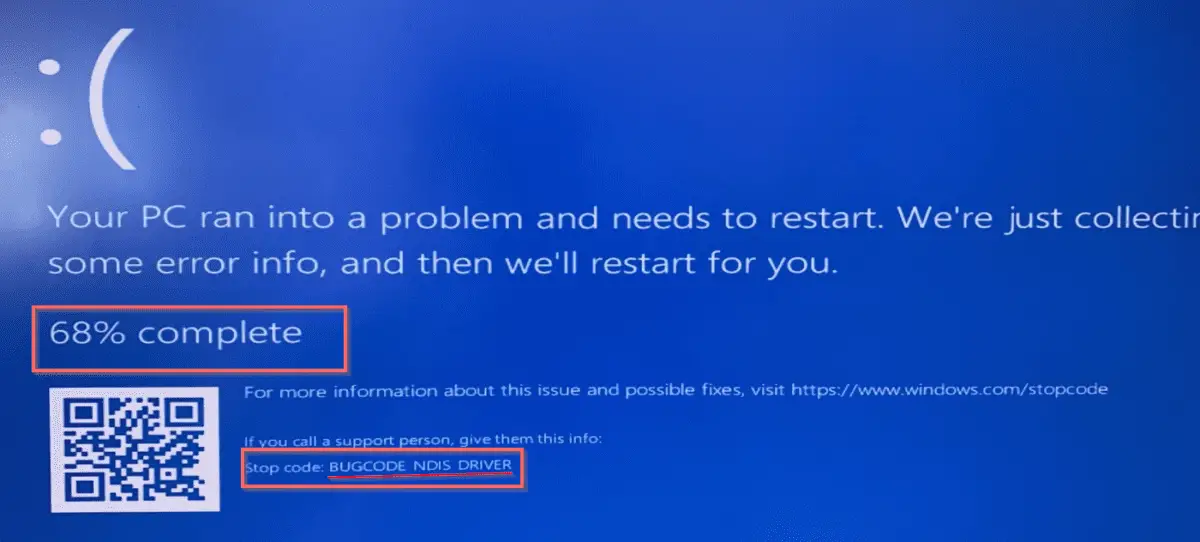
Does this look familiar?
Desktop pc running windows 10. After selecting update & restart from the start menu the above stop code error appears on the dreaded blue screen. The NDIS System Driver service is a kernel mode driver. If NDIS System Driver fails to load or initialize, the error is logged and the computer attempts to restart, using the Last Known Good configuration. If the Last Known Good configuration fails, Windows 10 startup also fails, and the boot process halts with a Stop error. If you have seen the BUGCODENDISDRIVER error with a BSOD, it is a driver problem. BLACK FRIDAY DEALS 2020 - Top Best Wi-Fi Routers for Home and Office in 2020 Most of the times, it comes during Windows 10 installation when Wi-Fi option is enabled in the BIOS. You may see several results like computer restart due to this error code.
All of a sudden, you Windows PC turns into a blue screen and shows you this error code: BUGCODE_USB_DRIVER. You must be very annoyed and frustrated. Don’t worry. Usually this is an easy problem to fix.
3 easy & effective methods to fix BUGCODE_USB_DRIVER:
- Adjust the Power settings
- Install Windows update on your Windows 10
- Check your hard disk
Method 1: Update your device drivers — the most successful
A very common cause to Bugcode USB Driver is the old or broken drivers. In most case, update your device drivers can solve the error. It’s always the most successful method from users’ feedback.
Whether you choose to update the device drivers manually, using Windows Update, or you use a trusted third party product, it’s essential that you have the latest correct device drivers for your operating system at all times.
If you’re not comfortable playing with device drivers, we recommend usingDriver Easy. It’s a tool that detects, downloads and (if you go Pro) installs any driver updates your computer needs.
To update your drivers with Driver Easy, just click the Scan Nowbutton, then when it lists the drivers you need to update, clickUpdate. The correct drivers will be downloaded, and you can install them – either manually through Windows or all automatically withDriver Easy Pro.
Restart your computer to see if the blue screen disappear. If it shows again, you know your drivers weren’t to blame, and you should try the next fix.
Method 2: Adjust the Power settings
Sometimes inappropriate power settings could also lead to the error. In such case, you can disable the USB selective suspend setting. Follow the steps below then.
1) Type power settings in the search box from Start. Then click Power & sleep settings on the top result.
2) Click Additional power settings on the right pane.
3) Click Choose when to turn off the display > Change advanced power settings.
4) On the pop-up window, expand the dialog after each: USB settings > USB selective suspend setting. Then set it to be Disable from the drop-down menu. Click OK to save your setting.

Method 3: Install Windows update on your Windows 10
Windows update always includes the bug fixes and adds new features. Installing the update helps some user fix the error. How to install is shown below:
1) Type update in the Search box from Start menu. Then click Check for updates on the top result.
2) On the pop-up page, click Check for updates.
Proceed to follow the on-screen instructions to install the updates.
Method 4. Check your hard disk
Damage or corruption of your hard disk could also bring the error. You can run check disk via command prompt to fix it.
1) Type cmd in the search box from Start menu. Then right-click on Command Prompt to choose Run as administrator.
2) Click Yes when prompted by User Account Control.

3) On the open Command Prompt window, type chkdsk /f. Then press Enter on your keyboard to run it.
Now it would start checking the hard disk for the possible issues causing the BSOD error.
That’s all there is to it. Have you solved the error? If you have any questions, please feel free to leave your comment below. And also if you have other methods to fix the error, share with us please, thanks.
The BUGCODE_NDIS_DRIVER (blue screen of death) error can occur during the initialization process for Windows XP, Vista, 2000, 2008, as well as Windows 7 and 8. This means that there is a problem loading a bad driver for a network device. This error caused the computer to crash suddenly to prevent corruption and data loss.
Ndis Driver Fix
The BSOD error is usually caused by improper operations performed by the driver on newly installed network hardware. The driver may be damaged, outdated, or incompatible with the operating system. Installing network equipment that is incompatible with your computer can also cause this error.
This BSOD error is also known as “BUGCODE_NDIS_DRIVER” and “STOP 0x0000007C””. Some Windows operating system users have reported this error, which is usually displayed on the screen during system initialization.
Disable the faulty driver in device manager
If the error occurs after installing a specific device driver, you can uninstall that driver through Device Manager. Here’s how it’s done:
- Press Windows Key + X and click Device Manager.
- In the Device Manager window, click the arrow next to a device category to expand it.
- You can now also reset the driver by right-clicking it and choosing Properties.
- Go to the Driver tab and click on Reset Driver.
- If that doesn’t work, you can right-click the driver you want to disable and click Disable.
If this stops the crashes, you will need to install a new driver from the manufacturer’s website in order to use this device. Perhaps a new driver update has fixed this issue.
Make sure your Windows operating system is up to date.
The most common causes of this type of error are hardware and software issues. If you are getting BUGCODE_NDIS_DRIVER BSoD errors, it is very possible that your computer has hardware or software issues. To fix this error, we recommend that you use Windows Update and download the latest fixes for Windows 10. These fixes are designed to fix many hardware or software problems. Therefore, installing the latest fixes should prevent Blue Screen of Death errors from appearing.
Ndis Driver Windows 10
Start Windows in Safe Mode on your PC
- Go to Start Menu
- Click the Stop drop-down menu …
- Select the restart option.
- Remove the battery and reinsert it.
- Then restart your computer.
- Immediately after reboot
- Select the safe mode option.
- Wait a few minutes to reset it.
- That’s all, it’s done.
Bugcode Ndis Driver Error Windows 10 Kms
Starting Windows in Safe Mode can fix this error. BUGCODE_NDIS_DRIVER Windows hotfix problem.